What are the Highlights of SD-WAN?
SD-WAN (software-defined wide area network) is a more automated and pre-defined approach to managing the WAN (wide area network), thereby massively reducing man-hours spent on configuring the perfect business network that spans large areas internally or externally on a large geographical scale. We will go into a lot more detail about what SD-WAN and how it can benefit you and your business, but first we can discuss the highlights, Reliability, Affordability and overall suitability of SD-WAN. Key advantages include:
- Reducing costs with transport independence across MPLS, 4G/5G LTE, and other connection types.
- Improving application performance and increasing agility.
- Optimising user experience and efficiency for software-as-a-service (SaaS) and public cloud applications.
- Simplifying operations with automation and cloud-based management.
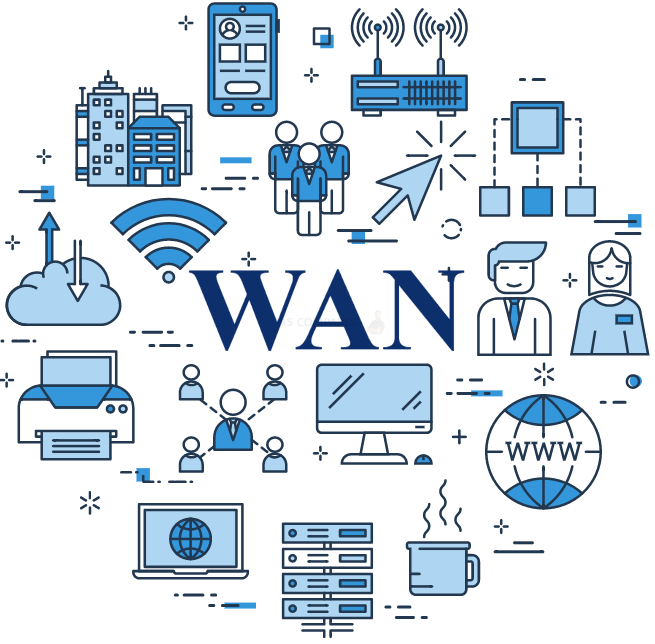
What is the Difference between WAN and SD-WAN?
The traditional WAN (wide-area network) function was to connect users at the branch or campus to applications hosted on servers in the data centre. Typically, dedicated MPLS circuits were used to help ensure security and reliable connectivity. This doesn’t work in a cloud-centric world. Times have changed. As businesses adopt the use of SaaS and infrastructure-as-a-service (IaaS) applications in multiple clouds, IT is realising that the user application experience is poor. That is because WANs designed for a different era are not ready for the unprecedented explosion of WAN traffic that cloud adoption brings. That traffic causes management complexity, application-performance unpredictability, and data vulnerability.
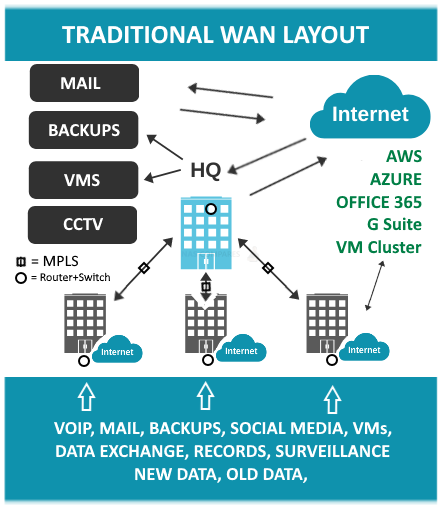
Further opening the enterprise to the Internet and the cloud exposes major threat and compliance issues. It is extremely challenging to protect the critical assets of an enterprise when applications are accessed by a diverse workforce, including employees, partners, contractors, vendors, and guests. Enabling broadband on the WAN makes the security requirements more acute, creating challenges for IT in balancing user experience, security, and complexity. New business models drive the need for a new network model. SD-WAN addresses the current IT challenges. This new approach to network connectivity can lower operational costs and improve resource usage for multisite deployments. Network administrators can use bandwidth more efficiently and can help ensure high levels of performance for critical applications without sacrificing security or data privacy.
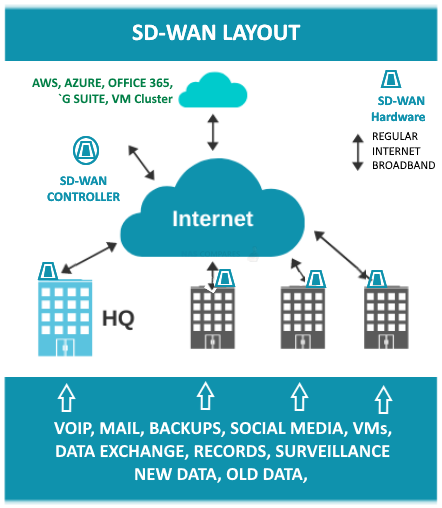
What Are the Benefits of SD-WAN?
The traditional WAN architecture was limited to enterprise, branch, and data centre. Once an organisation adopts cloud-based applications in the form of SaaS and IaaS, its WAN architecture experiences an explosion of traffic accessing applications distributed across the globe. These changes have multiple implications for IT. Employee productivity may be compromised by SaaS-application performance problems. WAN expenses can rise with an inefficient use of dedicated and backup circuits. IT fights a daily, complex battle of connecting multiple types of users with multiple types of devices to multiple cloud environments. With SD-WAN, IT can deliver routing, threat protection, efficient offloading of expensive circuits, and simplification of WAN network management. Business benefits can include the following:
- Reduced Network Costs: SD-WAN helps reduce your networking costs by allowing you to use whatever connection makes the most economic sense for your business. Instead of forcing all of your locations to use the same connection type, regardless of what works best in the area, your sites can use different connection types but maintain security and integrity with a single SD-WAN. This means your business no longer needs to pay for private connections, MPLS connections and firewalls at every site, and you can choose the connection type that works best for you.
- Improved Productivity and Efficiency: Being able to get online quickly and stay online throughout the day is one of the critical components of employee productivity in the modern age. With SD-WAN, you can ensure that this happens with intelligent routing that delivers more bandwidth over existing Internet connections, giving each employee the best application performance and a fast user experience.
- Network Continuity: Network downtime means your employees can’t work and your customers can’t process their orders, resulting in lost sales and productivity. Every second can mean hundreds of dollars in lost revenue. SD-WAN also ensures your network is always working and always available, with redundant systems and security measures that keep things running 24/7. The system does this by automatically routing traffic based on the location, time of day, system delays and other performance thresholds. If one site goes down, the Internet service of another location will pick up the slack.
- Auto-Provisioning: If you have multiple sites without an IT staff, you don’t need to worry about remote installation with an SD-WAN — the program will install itself when you connect the SD-WAN device to the location, so you don’t have to waste time or resources sending an IT person to handle it.
- Simpler Security: SD-WAN solutions eliminate the need to purchase multiple security appliances to cover each branch office and site. SD-WANs cover everything with firewall capabilities, data encryption and network security, all under a single umbrella cost.
SD-WAN or MPLS – Which is Better?
Prior to the arrival of SD-WAN as a smart network management operation, many businesses have relied on Multi-Protocol Label Switching as a mean of managing their network and internet connections intelligently. Though it has fallen out of popularity in conjunction with the growing use of huge cloud services, cloud storage and CMS systems accessed and maintained via the internet (something SD-WAN was devised to handle with relative ease). Though there have been some misconceptions that SD-WAN and MPLS are mutually exclusive.
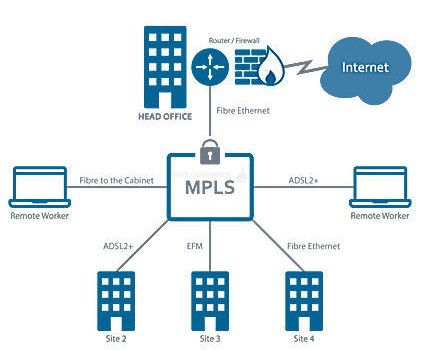
In fact, they are quite complementary. While most SD-WAN deployments include active utilization of broadband services, many continue to utilize MPLS circuits as part of the WAN transport resource pool. Enterprises with dual MPLS circuits at each branch site often allow one contract to expire and then continue with a hybrid strategy. We are beginning to see customers allow their secondary MPLS contracts to expire as they become comfortable moving forward with dual broadband services only. The result is tremendous bandwidth improvements and cost savings. An intelligent SD-WAN platform can combine transport services into a single, logical high-bandwidth link, improving application performance. More advanced platforms continuously monitor the throughput, packet loss, latency and jitter of all transport services. The SD-WAN then automatically routes traffic – and when necessary, reroutes traffic – to maintain compliance with Quality of Service and security policies.
📧 SUBSCRIBE TO OUR NEWSLETTER 🔔🔒 Join Inner Circle
Get an alert every time something gets added to this specific article!
This description contains links to Amazon. These links will take you to some of the products mentioned in today's content. As an Amazon Associate, I earn from qualifying purchases. Visit the NASCompares Deal Finder to find the best place to buy this device in your region, based on Service, Support and Reputation - Just Search for your NAS Drive in the Box Below
Need Advice on Data Storage from an Expert?
Finally, for free advice about your setup, just leave a message in the comments below here at NASCompares.com and we will get back to you. Need Help?
Where possible (and where appropriate) please provide as much information about your requirements, as then I can arrange the best answer and solution to your needs. Do not worry about your e-mail address being required, it will NOT be used in a mailing list and will NOT be used in any way other than to respond to your enquiry.
Need Help?
Where possible (and where appropriate) please provide as much information about your requirements, as then I can arrange the best answer and solution to your needs. Do not worry about your e-mail address being required, it will NOT be used in a mailing list and will NOT be used in any way other than to respond to your enquiry.

|
 |
Minisforum N5 NAS, 6 Months Later - Better, Worse, the Same?
Beelink ME Pro NAS Revealed
Best SOLID STORAGE NAS of 2025
Should You Worry About the NanoKVM Hidden Microphone?
Best Cheap NAS of 2025
Minisforum MS-02 Ultra - WHO IS THIS FOR??? (The First 48HRs)
Access content via Patreon or KO-FI
Discover more from NAS Compares
Subscribe to get the latest posts sent to your email.


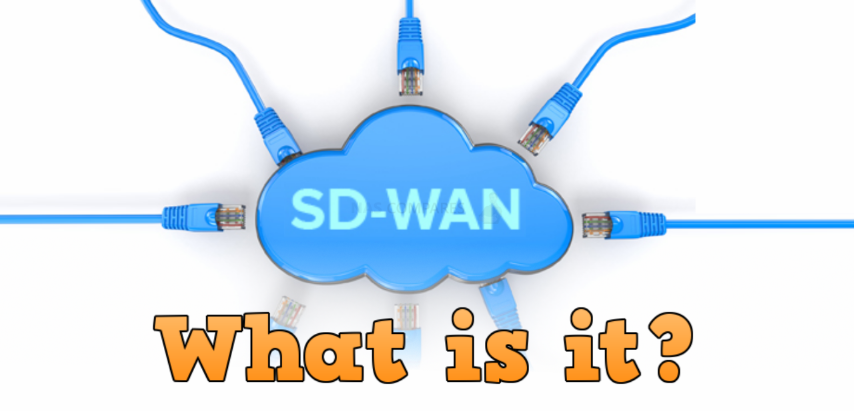



How to use Qnap SDWAN and Organisation Center? Could you make a Tutorial abbout that?
REPLY ON YOUTUBE